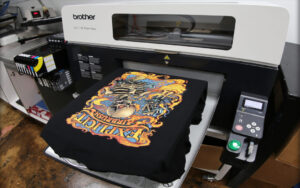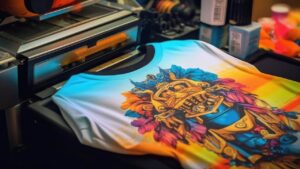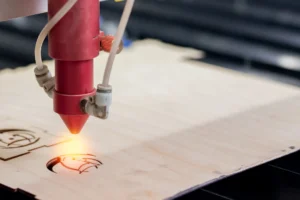Introduction
If you’re looking to start a custom apparel business or expand your current operations, you’ve likely come across two major printing techniques: Direct To Garment (DTG) Printing and Screen Printing. But which one is the right choice for your business?
Both methods have their pros and cons, and the decision ultimately depends on your needs, budget, and goals. In this article, we’ll break down the differences, advantages, and limitations of each technique so you can make an informed choice.
Table of Contents
| Sr# | Headings |
|---|---|
| 1 | What is Direct To Garment (DTG) Printing? |
| 2 | What is Screen Printing? |
| 3 | Key Differences Between DTG and Screen Printing |
| 4 | Quality and Detail Comparison |
| 5 | Durability and Washability |
| 6 | Cost Considerations |
| 7 | Speed and Production Efficiency |
| 8 | Best Uses for DTG Printing |
| 9 | Best Uses for Screen Printing |
| 10 | Eco-Friendliness and Sustainability |
| 11 | Equipment and Setup Requirements |
| 12 | Which Printing Method is Best for Small Businesses? |
| 13 | Which is More Profitable? |
| 14 | Final Verdict: Which One Should You Choose? |
| 15 | Frequently Asked Questions (FAQs) |
1. What is Direct To Garment (DTG) Printing?
DTG printing is a modern printing method that uses inkjet technology to apply water-based inks directly to fabric. It works similarly to how a standard home printer prints on paper but instead prints on garments. Start Design Now!
How DTG Works:
-
A digital design is uploaded to a computer and sent to the DTG printer.
-
The garment is placed in the printer, and the ink is sprayed directly onto the fabric.
-
The ink absorbs into the fibers, creating a smooth and detailed print.
Key Advantages of DTG:
-
Great for complex and colorful designs.
-
No setup costs, making it ideal for small batches or one-off prints.
-
Soft print feel since ink soaks into the fabric.

2. What is Screen Printing?
Screen printing is a traditional printing technique that uses stencils (screens) to apply layers of ink onto fabric. Each color in the design requires a separate screen, making it a labor-intensive process for multi-color designs.
How Screen Printing Works:
-
A stencil of the design is created on a mesh screen.
-
Ink is pushed through the screen onto the garment using a squeegee.
-
The process is repeated for each color in the design.
Key Advantages of Screen Printing:
-
Extremely durable and long-lasting prints.
-
Cost-effective for bulk orders.
-
Produces vibrant and opaque colors.
3. Key Differences Between DTG and Screen Printing
| Feature | DTG Printing | Screen Printing |
| Setup Time | Quick | Time-consuming |
| Cost per Print | High for small runs | Low for bulk orders |
| Detail & Color | High detail, unlimited colors | Limited colors, solid prints |
| Durability | Softer print, less durable | Thick, long-lasting prints |
| Best for | Small orders, detailed designs | Large orders, simple designs |
4. Quality and Detail Comparison
DTG allows for highly detailed designs with complex gradients, making it ideal for photographic prints. Screen printing, however, produces bold and vibrant colors but lacks fine detail and shading capabilities.
5. Durability and Washability
Screen-printed designs tend to last longer, as the ink sits on top of the fabric. DTG prints may fade over time with repeated washes, especially if not properly cured.
6. Cost Considerations
-
DTG: No setup costs but higher cost per print.
-
Screen Printing: High setup costs but cheaper per print for large batches.
7. Speed and Production Efficiency
Screen printing is faster for bulk orders, while DTG is ideal for print-on-demand services.
8. Best Uses for DTG Printing
-
Small orders and one-off prints.
-
Designs with multiple colors and fine details.
-
Print-on-demand businesses.
9. Best Uses for Screen Printing
-
Large production runs.
-
Simple, bold designs with fewer colors.
-
Merch for brands and events.
10. Eco-Friendliness and Sustainability
DTG uses water-based inks, making it more environmentally friendly than traditional plastisol screen printing inks.
11. Equipment and Setup Requirements
-
DTG: Digital printer, pretreatment machine, heat press.
-
Screen Printing: Screens, squeegees, drying racks, and multiple ink colors.
12. Which Printing Method is Best for Small Businesses?
DTG is the better choice for small businesses that rely on customization and small batch production.
13. Which is More Profitable?
Screen printing is more cost-effective for large orders, while DTG allows for greater design flexibility and on-demand sales.
14. Final Verdict: Which One Should You Choose?
If you prioritize detail and flexibility, go for DTG printing. If you want high-volume production at a lower cost, screen printing is the way to go. Get instructions!
15. Frequently Asked Questions (FAQs)
1. Is DTG more expensive than screen printing?
Yes, DTG is typically more expensive per print but has no setup costs, making it great for small batches.
2. Does DTG printing fade?
DTG prints may fade slightly over time, but proper care and curing can enhance longevity.
3. Can you screen print on any fabric?
Screen printing works best on cotton and cotton blends but can be adapted for polyester and other materials with special inks.
4. Is DTG better for detailed designs?
Yes, DTG excels at printing intricate details and a wide range of colors without limitations.
5. Which method is better for eco-friendly printing?
DTG is generally more eco-friendly due to its water-based inks, while screen printing often uses plastisol inks with chemicals.




